- Home
- Bobby Akart
New Madrid Earthquake Page 3
New Madrid Earthquake Read online
Page 3
“Does he give you a discount?” asked Jill with all sincerity.
Jack laughed. “Hell, he charges me double. Just kidding. No discount, but he personally supervises most of our soirees. You can’t ask for much more than that.”
Jill added to the conversation, but Jack couldn’t hear her. The Gateway Arch began to noticeably sway back and forth. A child shrieked, and a man yelled, “What’s happening?”
“Honey, what’s wrong?” Jill asked.
“Um, nothing,” Jack mumbled as he turned in a full circle to get a grasp of what was happening. “Listen, let me call you back tonight once we get settled in, okay?”
“But, sure. Why do you have to—?”
“I love you!” he said emphatically into the phone as if it were the final words spoken between them.
Jack rushed down the observation deck toward the group as the swaying subsided. Ever the gentleman, Tony held the attractive tour guide to help her stay on her feet. The disheveled young woman fixed her hair and shyly smiled to show her appreciation. Jack had seen that kind of look between people before. It was often the precursor to something else.
“It’s okay, everyone,” she said loudly in an effort to calm down the dozen or so people who rushed onto the observation deck from the other areas atop the Arch. “This is not out of the ordinary.”
“Was it the wind?” asked an older man who’d been in Jack’s tram.
“No. Probably a slight tremor,” she replied. “There’s nothing to be afraid of. We get them here in St. Louis from time to time. That’s one of the magnificent aspects of the Gateway Arch. Its structural design is truly a wonder of engineering.”
She spun around and immediately adopted her tour-guide persona. “The first three hundred feet of the Arch consists of carbon-steel walls with reinforced concrete in the middle. All of these are covered with stainless-steel skin, kinda like two slices of bread creating a sandwich. This combination of stressed-skin design connects at the top to make it resistant to earthquakes much stronger than the little tremor we just experienced. In fact, it can sway up to eighteen inches in either direction during a quake while also withstanding hurricane-force winds up to one hundred fifty miles per hour.”
“What’s the strongest earthquake in St. Louis since the Arch was built?” the older man asked.
The young woman, who’d regained her composure, clasped her hands together as she adopted a schoolteacher posture. “That happened in 1968, only five years after the Arch was completed. The magnitude 5.5 shock was centered just south of here and was felt in twenty-three surrounding states.”
“Wow, that was a big earthquake!” exclaimed a young boy, who still held his mother’s hand with a death grip.
Jack wandered away to study the now-illuminated St. Louis skyline. He muttered to himself, “Not as big as it could be.”
Chapter Three
Monday, December 17
Atwood Residence
Cordova, Tennessee
“I love you back,” Jill Atwood replied as Jack disconnected the call. He’d seemed to rush her off the phone, which wasn’t like him. She shrugged it off, chalking it up to something Tony related. She set the phone down on the kitchen island amongst the cookbooks, recipe cards, and her iPad opened to CountryLiving.com, her go-to website for holiday meal planning.
Jill was organized in a frantic week-before-the-family’s-arrival sort of way. Notepads and multicolored pens were used for meal plans, shopping lists, and an agenda of daily activities. Sure, there were apps for all of that. However, Jill had learned about running a household from her grandmother, who wanted nothing to do with those newfangled thingamajigs.
“Mom! Can we change the channel? We’ve been watching these movies since Halloween. I’ve seen this one at least three times.”
Her twelve-year-old daughter, Emily, had been by her side for most of the Christmas decorating. One of their family traditions during the holiday season was watching the Hallmark Channel. Each year, the network would begin presenting their Christmas-themed programming earlier and earlier. It used to be considered bad form to start the Thanksgiving and Christmas celebrations prior to Halloween.
As retailers began inching their holiday merchandise releases into October, Hallmark followed suit and began to show their Christmas movies earlier, too. Now, in October, you could watch Freddy Krueger slash open some poor soul on Elm Street on one channel, or switch over to see Candace Cameron Bure serve up chewy ginger cookies on Hallmark’s version of Elm Street, USA.
Jill returned to the family room, where their Christmas tree stood partially decorated near the fireplace. The flames flickered through the split-oak firewood, providing plenty of heat and an abundance of ambience. Her mantel was decorated with garland, stockings, and their holders. Above it, the TV showed a young couple falling in love below the mistletoe, staring dreamily into one another’s eyes as faux snow fell around them. It was the quintessential happy ending to a Hallmark Christmas movie. She’d seen it so many times before, and it always warmed her heart.
“Okay, Em. Whadya wanna watch?”
“The Grizzlies are on,” mumbled her son, Tate. The fifteen-year-old never took his attention away from his iPhone as he scrolled through the timeline of one social media app or another.
“No!” Emily voiced her objection. “We watched football all day yesterday. Basketball sucks anyway.”
“Language, young lady!”
Emily looked at her mother and tilted her head as if she had no idea what she’d said wrong. Somehow, the word sucks had eased its way into the American vernacular as a way to describe something undesirable or disappointing. Few people regularly using the term realized it derived from the term meaning to perform oral sex.
Tate, who was generally indifferent to television unless it involved a sporting event, made a suggestion. “We’ve got The Walking Dead season finale in the can from last night.” In the can was Tate’s way of referring to the movies and shows stored on the cable box DVR hard drive. Jack used in the can to announce where’d he’d be when it was time to go to the bathroom. They were boys.
“Eww, gross,” Emily objected again.
Jill rolled her eyes. Tired of acting as a referee between the kids, she switched the channel to digital radio so she could listen to Christmas music. Nowadays, television programming sucked, she thought to herself, generating a slight giggle.
She turned to the kids and put her hands on her hips. “Okay, let’s get back to the job at hand. We’ve got a tree to decorate and lots of boxes to put away. Who’s ready?”
Emily’s arms shot up. Tate didn’t move.
“Okay, Em. I’ll have you help me with the Shiny Brites. Tate? What about you?”
He raised his eyes from his phone for the first time. He glanced around the room before responding, “I’ll take cleanup.”
“Okay. Okay. That’s good. You can repack the empty boxes and put them in the garage. But don’t you wanna help decorate the tree? I could use some help with the star tree-topper.”
“How about I get the ladder?” he offered.
Jill studied him for a moment. In the six months since he’d turned fifteen, his attitude toward family events had changed dramatically. He was a sophomore at Memphis University School, a private school for boys in grades seven through twelve. It was a very disciplined college-preparatory school that he’d attended for two years. His grades hadn’t fallen off, and to the contrary, he was excelling in most of his subjects.
His extracurricular activities centered around sports. The entire enrollment of MUS was around seven hundred boys. Their sports program was limited, so many of the young men showing an interest in athletics played multiple sports. Tate, as a sophomore, had been invited to play football, baseball, and basketball on the varsity teams. He was tall for his age, making him an ideal addition to the basketball team, but football was his first love.
Every parent was warned to watch for sudden mood changes in their teenagers. It could b
e an indication he was running with the proverbial wrong crowd. Maybe drinking or drugs were involved. She and Jack discussed it from time to time as they watched for the telltale signs, including secretive behavior, failing grades, or a general lack of interest in anything other than new friends or social media.
Social media had always been a concern for them. Other than his after-school practices, Tate spent any extra time away from his studies interacting with others on Instagram and Facebook. Tate despised Twitter, constantly referring to the app’s users as vile human beings. Jill checked out the Twitter feed from time to time and found herself both agreeing with her son and admiring him for the good sense to avoid it.
“Okay, big guy,” she replied. “You grab the ladder while Emily and I adorn this magnificent tree with the brightest Shiny Brite ornaments known to man. Right, Em?”
“Right! I’ll start with this one.” She pulled out a pink mercury glass bauble with a snowy scene depicted all around it.
The Shiny Brites, along with their home, were something Jill and her sister, Beth, inherited from their grandmother. Like their family roots stretching back to Germany, Shiny Brite ornaments were of German descent. They had been created by German-born Max Eckardt following World War I. He and his brother were toymakers. Soon, the popularity of the glass ornaments stretched across the Atlantic to America. In 1937, he formally founded the Shiny Brite company, so named because the insides of the ornaments were coated with silver nitrate in order to remain shiny Christmas after Christmas. By 1940, he’d partnered with the Corning glass company to produce three hundred thousand ornaments a day. After the war, he assisted in the rebuilding of Germany by adding ornament factories there.
Jill’s grandmother used to talk about German work ethic and the pride their toymakers took in creating Christmas decorations. Jill and Beth would spend hours listening to their grandmother explain what Christmas meant to her, both as a family gathering but also as a way to celebrate the birth of Christ. One of her favorite sayings was remember the reason for the season. It was her grandmother’s strong influence that gave Jill the strength to persevere during a period of great emotional loss. That same strength would serve her well in the near future.
Chapter Four
Tuesday, December 18
USGS
Golden, Colorado
Dr. Lansing liked to jog to the USGS offices located on the campus of the Colorado School of Mines in Golden, Colorado. The weather conditions had little impact on her decision unless the sidewalks were covered with ice. It was her way of allowing her two worlds to meet. A transition, of sorts, between life at home with her husband and live-in mother-in-law and the job she loved.
Despite being the middle of December, temperatures were in the low fifties courtesy of the jet stream trapping cold air in the polar regions. She’d left the house thirty minutes earlier to burn a few calories picked up during her three-day stay in Missouri. Between the carb-filled foods at the earthquake conference and the delicious meals served up by her mother in Columbia, Dr. Lansing had gained ten pounds. She was sure of it.
She picked up the pace as she passed the marijuana dispensaries on Ford Street. The increase in homelessness in suburban Denver continued despite arguments from the pro-legalization lobby. Denver had become the unofficial legal marijuana capital of America. The homelessness rate leapt eight percent the first year following the implementation of the marijuana legalization initiative.
To counter the negative publicity surrounding the influx of Californians seeking a Rocky Mountain high, old unprofitable hotels were converted to government-run affordable housing. The newly arrived homeless were given a free place to live. They now had an address. Therefore, they were no longer homeless, technically speaking. Problem solved.
Except there were still homeless people huddled near the intersection of Ford and Tenth, where Dr. Lansing jogged back and forth to work most days. Usually they ignored her. Sometimes they didn’t, which made for a few uncomfortable confrontations.
As she ran, she glanced over at Coors Brewery, one of the few vices she allowed herself. Empty calories, to be sure. Another favorite vice in which she indulged only occasionally was Bob’s Atomic Burgers to her right. The retro-style burger joint was a local favorite, especially in the summer, when patrons sat outside to enjoy an incredible view of the South Table Mountain, a mesa just beyond the brewery.
She slowed her pace to a walk as she approached the National Earthquake Information Center. The NEIC, part of the USGS, was tasked with identifying, as rapidly and accurately as possible, the location and size of significant earthquakes around the world. They would then disseminate the data to associated national and international agencies, catastrophic response entities like FEMA, and lastly, after approval from the White House, to the public.
The NEIC was also a data-gathering entity. It was a central hub to collect extensive seismic reporting and research compiled from digital helicorders around the world. Prior to advanced technology, these devices recorded signals from seismometers onto a piece of paper wrapped around a drum. A pen drew the signal on the paper, jumping at small intervals when seismic activity occurred. The bigger the shake, the bigger the quake.
Now, the raw data was processed digitally and strained, as they say, through a band-pass filter to separate global events from localized ones. The public didn’t realize some earthquakes were of such a large magnitude they could be felt in other parts of the world.
For Dr. Lansing, landing the position of director at the NEIC was like allowing a kid alone in a candy store. There was never enough data for her to analyze. Everything that happened, even on the dull and mundane days, caused her excitement and was worthy of study. She considered herself more than a trained geophysicist. She was Mother Earth’s personal physician.
She made her way into the lobby of the NEIC and was immediately greeted by the receptionist.
“Good morning, Doc!” The young intern from the Colorado School of Mines worked for minimum wage when she wasn’t attending to her studies. She was one of several students who had been selected out of hundreds of applicants for the opportunity to simply work inside the hallowed halls of the NEIC. It was a résumé builder for them.
“Hi, Jasmine,” said Dr. Lansing, returning the young woman’s beaming smile.
Jasmine stood and handed the director a stack of phone messages. “Also, here’s your copy of the FEMA Daily Operations Briefing.”
“Thank you,” said Dr. Lansing as she began to make her way to the operations center, her normal first stop upon arrival. Jasmine stopped her.
“Oh, I almost forgot. This is for you.” She handed Dr. Lansing the morning copy of the Golden Transcript, the second oldest newspaper in Colorado.
Dr. Lansing playfully scowled as she turned the newspaper over and examined it. “What’s this?”
“A newspaper.”
“You mean they still make these silly things?” she asked with a grin on her face.
“Sure, people still read them. Besides, everybody likes to read about themselves in the paper.”
Dr. Lansing opened it to view the headline on the front page. The Colorado governor had just resigned after allegations of campaign finance fraud. Not everybody, she thought to herself. She flipped it over to check the headlines below the fold.
“Are you saying I’m in here?”
“Yes, ma’am. About your speech at the conference.”
“Why would the local paper care?”
Jasmine laughed and then replied, “Are you kidding? When you talk about sexy things like Devil’s Staircases, what media outlet could resist?”
Dr. Lansing wasn’t sure if the Devil’s Staircase reference was quite as sexy as a soon-to-be-indicted governor, but she’d take it. Then a look of concern came over her face.
“Were they kind to me?”
“They said you were knowledgeable and informative. You know, generally great.”
“Generally?” asked the woman who was arg
uably one of the nation’s leading geophysicists.
“Well, yes. Except for the part about you being the prophetess of doom.”
Dr. Lansing scowled and muttered to herself, “Nice.”
She made her way into the operations center, debating whether to drop the paper in the trash or read about herself somewhere on page six.
“Hi, Dr. Lansing,” said one of the geologists who assisted her in the field on most research projects. “I watched the closed-circuit broadcast of your presentation. I thought you were fantastic. Newspapers are really stupid for many reasons. You know what they say about—”
Dr. Lansing waved her hand to cut him off before he finished. She caught his drift. “Would you mind getting me a bottle of water and a banana?”
He turned to retrieve both items off his cubicle desk. He was one step ahead of her.
“I figured you’d take a longer run today.”
“Because of the article?” The whole prophetess of doom reference was eating at her. She’d never incorrectly pulled the trigger on any earthquake warning. In fact, her forecasting capabilities were second to none. However, New Madrid was unique, and she’d take every opportunity to remind the scientific community of that.
“No,” he replied. “Because every time you travel, you complain of weight gain. It’s never really the case, but you say it every time.”
These people know me too well. “Okay. Follow me.”
She walked into the center of the operations center, where cubicles, computer monitors, and maps encircled her. Geophysicists of all levels of expertise were manning their stations.
She raised her voice to announce her presence. “So how’s our patient today?”
Most of the personnel swung around in their chairs. They acknowledged the arrival of the woman they all highly respected and enjoyed working for.

 Geostorm The Collapse: A Post Apocalyptic EMP Survival Thriller (The Geostorm Series Book 3)
Geostorm The Collapse: A Post Apocalyptic EMP Survival Thriller (The Geostorm Series Book 3)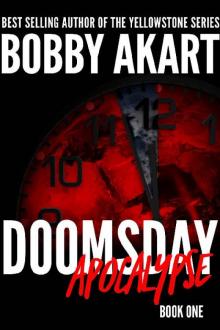 Doomsday Apocalypse
Doomsday Apocalypse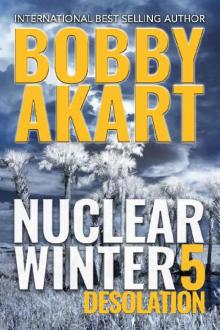 Nuclear Winter Desolation: Post Apocalyptic Survival Thriller (Nuclear Winter Series Book 5)
Nuclear Winter Desolation: Post Apocalyptic Survival Thriller (Nuclear Winter Series Book 5)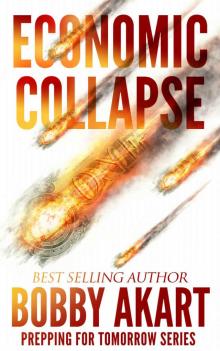 Economic Collapse (Prepping for Tomorrow Book 2)
Economic Collapse (Prepping for Tomorrow Book 2)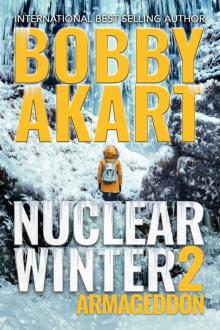 Nuclear Winter Armageddon
Nuclear Winter Armageddon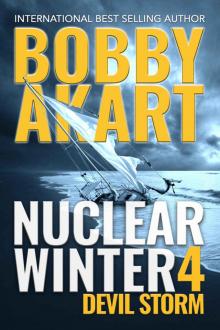 Nuclear Winter Devil Storm
Nuclear Winter Devil Storm Virus Hunters 3: A Medical Thriller
Virus Hunters 3: A Medical Thriller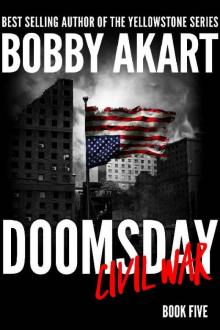 Doomsday Civil War: A Post-Apocalyptic Survival Thriller (The Doomsday Series Book 5)
Doomsday Civil War: A Post-Apocalyptic Survival Thriller (The Doomsday Series Book 5)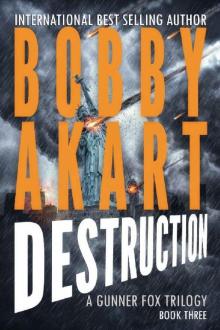 Asteroid Destruction
Asteroid Destruction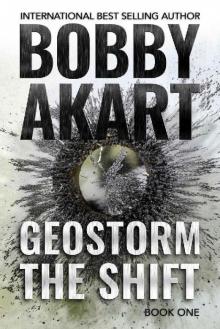 Geostorm the Shift
Geostorm the Shift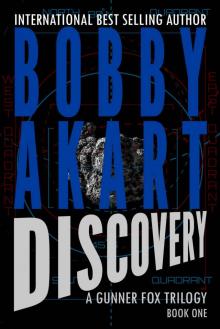 Asteroid Discovery
Asteroid Discovery Virus Hunters 2: A Medical Thriller
Virus Hunters 2: A Medical Thriller Geostorm The Shift: A Post-Apocalyptic EMP Survival Thriller (The Geostorm Series Book 1)
Geostorm The Shift: A Post-Apocalyptic EMP Survival Thriller (The Geostorm Series Book 1) Asteroid Diversion
Asteroid Diversion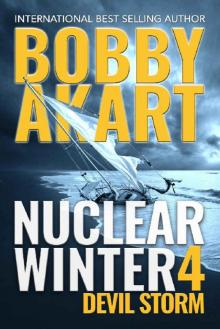 Nuclear Winter Devil Storm: Post Apocalyptic Survival Thriller (Nuclear Winter Series Book 4)
Nuclear Winter Devil Storm: Post Apocalyptic Survival Thriller (Nuclear Winter Series Book 4)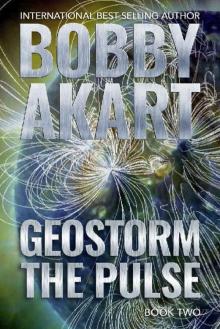 Geostorm The Pulse: A Post Apocalyptic EMP Survival Thriller (The Geostorm Series Book 2)
Geostorm The Pulse: A Post Apocalyptic EMP Survival Thriller (The Geostorm Series Book 2)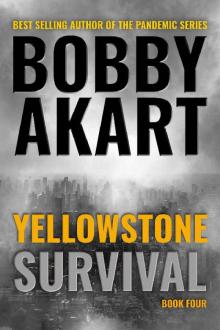 Yellowstone: Survival: A Post-Apocalyptic Survival Thriller (The Yellowstone Series Book 4)
Yellowstone: Survival: A Post-Apocalyptic Survival Thriller (The Yellowstone Series Book 4) Nuclear Winter First Strike: Post-Apocalyptic Survival Thriller
Nuclear Winter First Strike: Post-Apocalyptic Survival Thriller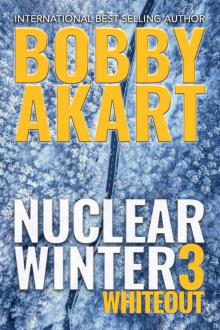 Nuclear Winter Whiteout
Nuclear Winter Whiteout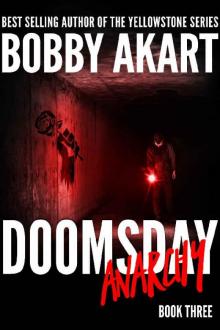 Doomsday Anarchy
Doomsday Anarchy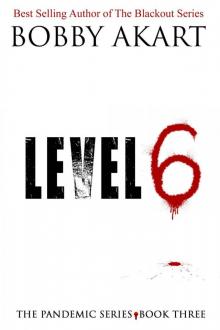 Pandemic: Level 6: A Post Apocalyptic Medical Thriller Fiction Series (The Pandemic Series Book 3)
Pandemic: Level 6: A Post Apocalyptic Medical Thriller Fiction Series (The Pandemic Series Book 3) Martial Law
Martial Law Odessa Reborn: A Terrorism Thriller (Gunner Fox Book 4)
Odessa Reborn: A Terrorism Thriller (Gunner Fox Book 4)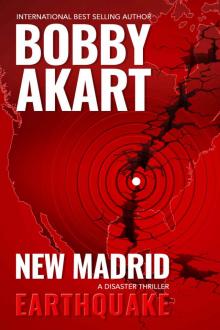 New Madrid Earthquake
New Madrid Earthquake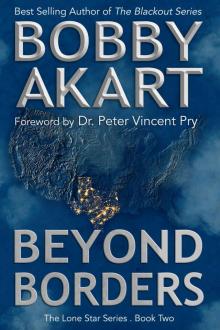 Beyond Borders: Post Apocalyptic EMP Survival Fiction (The Lone Star Series Book 2)
Beyond Borders: Post Apocalyptic EMP Survival Fiction (The Lone Star Series Book 2)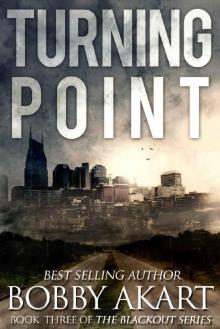 The Blackout Series (Book 3): Turning Point
The Blackout Series (Book 3): Turning Point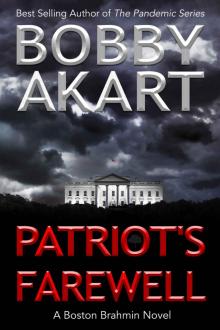 Patriot's Farewell: A Political Thriller Fiction Series (Boston Brahmin Political Thrillers Book 7)
Patriot's Farewell: A Political Thriller Fiction Series (Boston Brahmin Political Thrillers Book 7)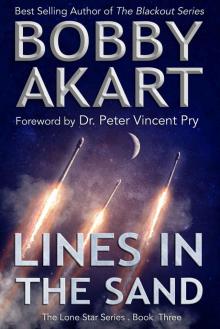 Lines in the Sand_Post Apocalyptic EMP Survival Fiction
Lines in the Sand_Post Apocalyptic EMP Survival Fiction The Mechanics: A Post-Apocalyptic Fiction Series
The Mechanics: A Post-Apocalyptic Fiction Series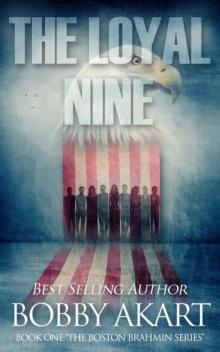 The Loyal Nine
The Loyal Nine Axis of Evil
Axis of Evil Axis of Evil: Post Apocalyptic EMP Survival Fiction (The Lone Star Series Book 1)
Axis of Evil: Post Apocalyptic EMP Survival Fiction (The Lone Star Series Book 1)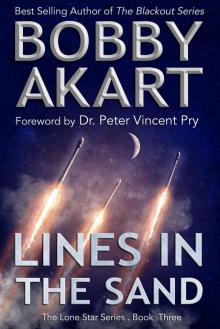 Lines in the Sand: Post Apocalyptic EMP Survival Fiction (The Lone Star Series Book 3)
Lines in the Sand: Post Apocalyptic EMP Survival Fiction (The Lone Star Series Book 3) Odessa Strikes
Odessa Strikes The Blackout Series (Book 4): Shiloh Ranch
The Blackout Series (Book 4): Shiloh Ranch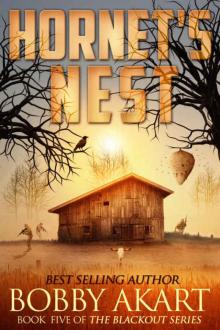 Hornet's Nest: A Post Apocalyptic EMP Survival Fiction Series (The Blackout Series Book 5)
Hornet's Nest: A Post Apocalyptic EMP Survival Fiction Series (The Blackout Series Book 5) Yellowstone: Fallout: A Post-Apocalyptic Survival Thriller (The Yellowstone Series Book 3)
Yellowstone: Fallout: A Post-Apocalyptic Survival Thriller (The Yellowstone Series Book 3)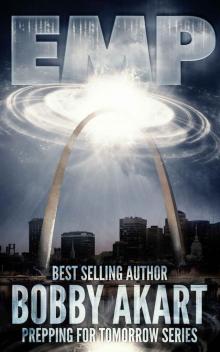 Electromagnetic Pulse
Electromagnetic Pulse Texas Strong: Post Apocalyptic EMP Survival Fiction (The Lone Star Series Book 4)
Texas Strong: Post Apocalyptic EMP Survival Fiction (The Lone Star Series Book 4)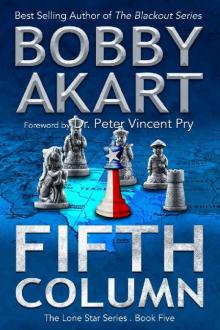 Fifth Column_Post Apocalyptic EMP Survival Fiction
Fifth Column_Post Apocalyptic EMP Survival Fiction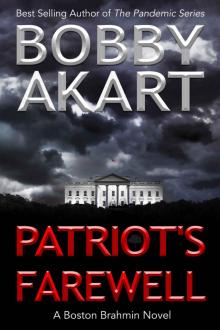 Patriot's Farewell
Patriot's Farewell Texas Strong_Post Apocalyptic EMP Survival Fiction
Texas Strong_Post Apocalyptic EMP Survival Fiction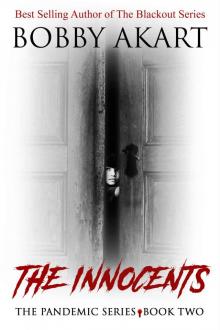 Pandemic: The Innocents: A Post-Apocalyptic Medical Thriller Fiction Series (The Pandemic Series Book 2)
Pandemic: The Innocents: A Post-Apocalyptic Medical Thriller Fiction Series (The Pandemic Series Book 2) Shiloh Ranch: A Post Apocalyptic EMP Survival Fiction Series (The Blackout Series Book 4)
Shiloh Ranch: A Post Apocalyptic EMP Survival Fiction Series (The Blackout Series Book 4)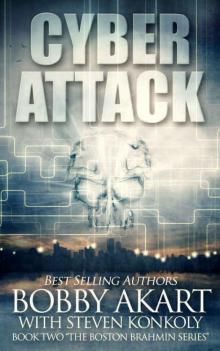 Cyber Attack
Cyber Attack Beyond Borders
Beyond Borders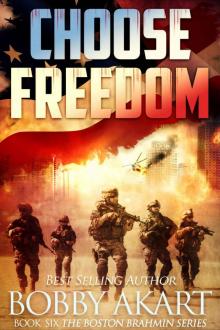 Choose Freedom: A Post-Apocalyptic Fiction Series (The Boston Brahmin Book 6)
Choose Freedom: A Post-Apocalyptic Fiction Series (The Boston Brahmin Book 6)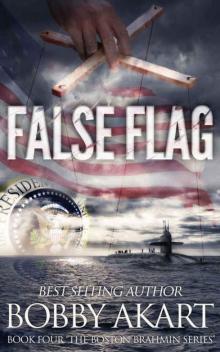 False Flag
False Flag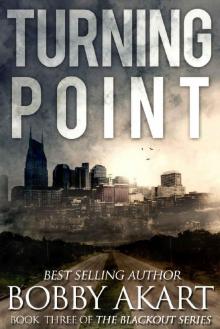 Turning Point: A Post Apocalyptic EMP Survival Fiction Series (The Blackout Series Book 3)
Turning Point: A Post Apocalyptic EMP Survival Fiction Series (The Blackout Series Book 3) Nuclear Winter First Strike
Nuclear Winter First Strike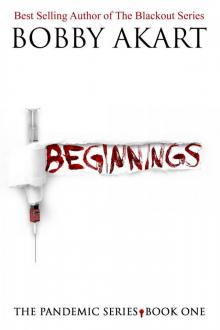 Pandemic: Beginnings: A Post-Apocalyptic Medical Thriller Fiction Series (The Pandemic Series Book 1)
Pandemic: Beginnings: A Post-Apocalyptic Medical Thriller Fiction Series (The Pandemic Series Book 1)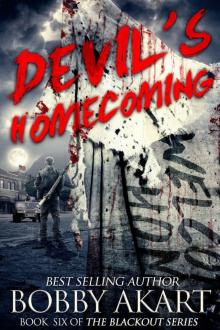 Devil's Homecoming: A Post Apocalyptic EMP Survival Fiction Series (The Blackout Series Book 6)
Devil's Homecoming: A Post Apocalyptic EMP Survival Fiction Series (The Blackout Series Book 6)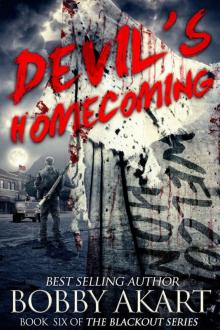 The Blackout Series (Book 6): Devil's Homecoming
The Blackout Series (Book 6): Devil's Homecoming Yellowstone: Inferno: A Post-Apocalyptic Survival Thriller (The Yellowstone Series Book 2)
Yellowstone: Inferno: A Post-Apocalyptic Survival Thriller (The Yellowstone Series Book 2)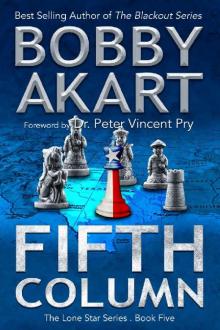 Fifth Column: Post Apocalyptic EMP Survival Fiction (The Lone Star Series Book 5)
Fifth Column: Post Apocalyptic EMP Survival Fiction (The Lone Star Series Book 5) Yellowstone: Hellfire: A Post-Apocalyptic Survival Thriller (The Yellowstone Series Book 1)
Yellowstone: Hellfire: A Post-Apocalyptic Survival Thriller (The Yellowstone Series Book 1) The Blackout Series (Book 2): Zero Hour
The Blackout Series (Book 2): Zero Hour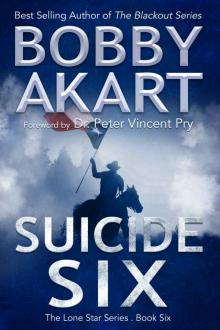 Suicide Six: Post Apocalyptic EMP Survival Fiction (The Lone Star Series Book 6)
Suicide Six: Post Apocalyptic EMP Survival Fiction (The Lone Star Series Book 6)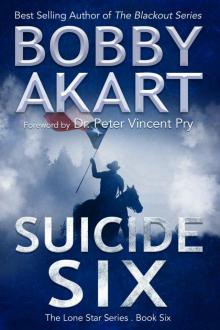 Suicide Six_Post Apocalyptic EMP Survival Fiction
Suicide Six_Post Apocalyptic EMP Survival Fiction Zero Hour: A Post-Apocalyptic EMP Survival Fiction Series (The Blackout Series Book 2)
Zero Hour: A Post-Apocalyptic EMP Survival Fiction Series (The Blackout Series Book 2)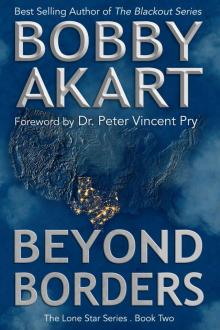 Beyond Borders_Post Apocalyptic EMP Survival Fiction
Beyond Borders_Post Apocalyptic EMP Survival Fiction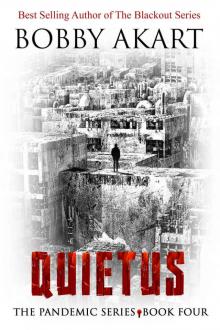 Pandemic: Quietus: A Post-Apocalyptic Dystopian Fiction Series (The Pandemic Series Book 4)
Pandemic: Quietus: A Post-Apocalyptic Dystopian Fiction Series (The Pandemic Series Book 4)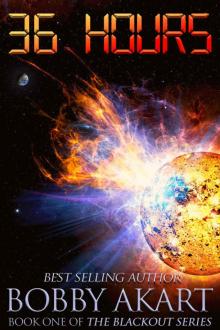 36 Hours: A Post-Apocalyptic EMP Survival Fiction Series
36 Hours: A Post-Apocalyptic EMP Survival Fiction Series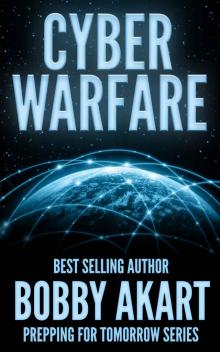 Cyber Warfare
Cyber Warfare